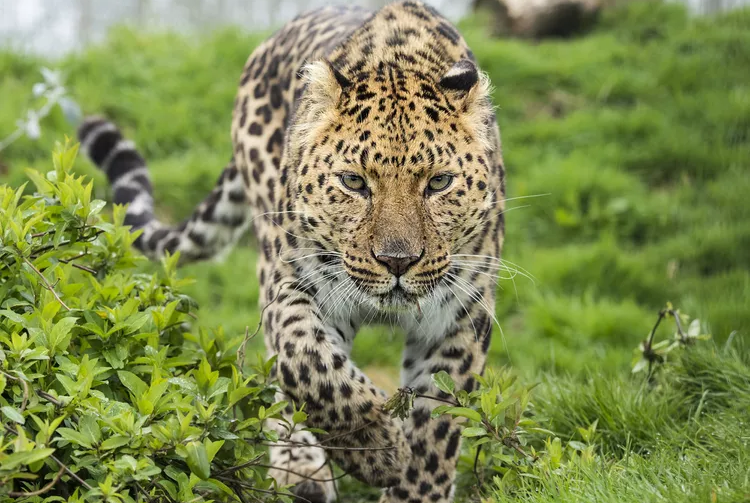Introduction
The Amur leopard (Panthera pardus orientalis) is one of the rarest and most beautiful big cats on Earth. Known for its striking coat and incredible agility, this elusive predator inhabits the temperate forests of the Russian Far East and northeastern China. Sadly, the Amur leopard is critically endangered, with only a few dozen individuals estimated to remain in the wild.
This article explores why Amur leopards are endangered, the threats they face, and what actions can be taken to protect and conserve this magnificent species.
The Amur Leopard: A Brief Overview
Amur leopards are a subspecies of leopard adapted to the cold, harsh environment of the Russian Far East. They have thick fur with wide-set rosettes and spots that provide camouflage in snowy forests. Adults weigh between 70 to 105 pounds and are solitary, territorial animals.
Their elusive nature makes them difficult to study, but recent camera traps and conservation efforts have provided valuable insights into their habits and challenges.
Why Are Amur Leopards Endangered?
1. Habitat Loss and Fragmentation
One of the primary reasons Amur leopards are endangered is the rapid loss of their forest habitat. Logging, agriculture, and infrastructure development have reduced and fragmented their living spaces. Habitat fragmentation isolates populations, making it harder for leopards to find mates and maintain genetic diversity.
2. Poaching and Illegal Wildlife Trade
Amur leopards have been heavily targeted by poachers. Their beautiful fur is highly valued in the illegal wildlife trade. Additionally, poaching of their prey—such as roe deer and wild boar—depletes their food sources, making survival even more difficult.
3. Human-Wildlife Conflict
As human settlements expand, encounters between leopards and people increase. Livestock predation can lead to retaliation killings by farmers and herders. Without proper conflict mitigation measures, this threat continues to impact the population.
4. Small Population Size and Genetic Bottleneck
With only around 100 individuals estimated in the wild, the Amur leopard faces the risks of inbreeding and genetic bottlenecks. Reduced genetic diversity can lower fertility rates, increase vulnerability to diseases, and reduce adaptability to environmental changes.
5. Climate Change
Climate change poses emerging threats by altering habitats and prey availability. Changes in temperature and precipitation patterns can impact the forest ecosystems that Amur leopards depend on, further stressing their populations.
Current Conservation Efforts
Protected Areas and Reserves
The establishment of protected areas like Russia’s Land of the Leopard National Park has been crucial. This reserve provides a safe habitat for Amur leopards and their prey, reducing human disturbance and poaching risks.
Anti-Poaching Patrols
Rangers and conservation organizations conduct regular patrols to prevent illegal hunting and enforce wildlife laws. These patrols have helped reduce poaching incidents and improve leopard survival chances.
Community Engagement and Education
Educating local communities about the importance of Amur leopards and promoting coexistence strategies helps reduce human-wildlife conflict. Compensation schemes for livestock losses and alternative livelihoods encourage tolerance toward leopards.
Scientific Research and Monitoring
Advancements in camera traps, GPS collars, and genetic studies allow scientists to monitor Amur leopard populations, understand their ecology, and develop effective conservation plans.
International Cooperation
Because Amur leopards live near the Russia-China border, international collaboration between these countries is essential for cross-border conservation, anti-poaching efforts, and habitat connectivity.
What Can We Do to Help?
Support Conservation Organizations
Donating to reputable wildlife conservation groups working on Amur leopard protection can provide funding for anti-poaching patrols, habitat restoration, and research.
Raise Awareness
Spreading knowledge about Amur leopards’ plight through social media, community talks, and educational programs helps build global support for their conservation.
Promote Sustainable Tourism
Ecotourism in regions where Amur leopards live can provide economic incentives for local communities to protect wildlife and habitat, but it must be carefully managed to avoid disturbance.
Advocate for Stronger Wildlife Laws
Supporting policies that strengthen wildlife protection, combat illegal trade, and fund conservation initiatives can make a significant difference at national and international levels.
Reduce Your Environmental Footprint
Combatting climate change by reducing carbon emissions, supporting renewable energy, and conserving natural resources indirectly benefits Amur leopards and their habitats.
Challenges Ahead
Despite conservation successes, the Amur leopard remains critically endangered. Continued habitat loss, climate threats, and poaching risks require sustained commitment and resources. Balancing human development with wildlife protection in the region is complex but essential.
Genetic rescue through carefully managed breeding programs may be necessary to increase population viability. Moreover, expanding and connecting protected areas to allow leopard movement will help maintain healthy populations.
Conclusion
The Amur leopard symbolizes the fragile beauty of our planet’s biodiversity and the urgent need for conservation action. While this majestic big cat teeters on the brink of extinction, coordinated efforts by governments, scientists, local communities, and global citizens offer hope.
By understanding why Amur leopards are endangered and actively supporting conservation measures, we can help ensure that future generations will continue to marvel at the grace and power of this extraordinary species.
Protecting the Amur leopard is not just about saving one animal—it’s about preserving entire ecosystems and the natural heritage that sustains life on Earth.






Leave a Reply